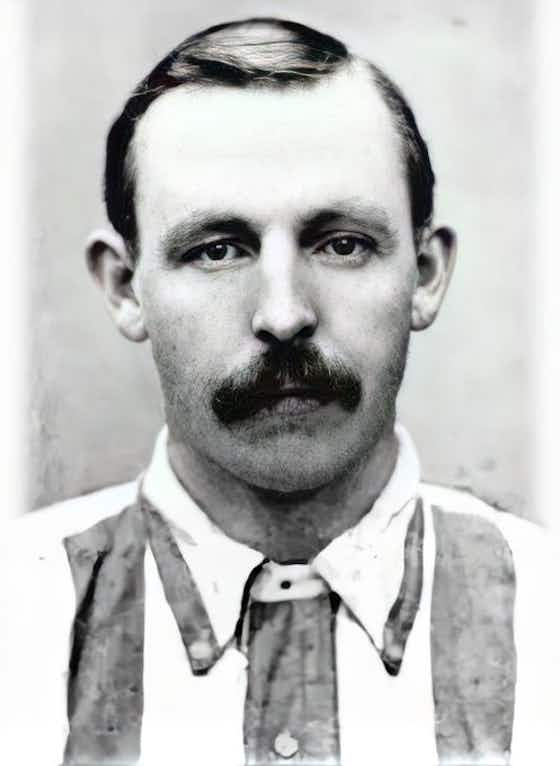The Celtic Star
·26 maggio 2025
Celtic Player of the Day – The Duke, Sandy McMahon, the “Bayard” of Scottish football

In partnership with
Yahoo sportsThe Celtic Star
·26 maggio 2025

He was tall, slightly gangly and normally seen with a moustache. He did not really look like a football player, but it was soon discovered that he was a skilful ball player and in particular a great goalscorer, often with his head. He very soon became a hero of the infant club.
Sandy McMahon
He scored at least twice (newspapers disagree) in the first Scottish Cup win in 1892 and he also won Cup medals in 1899 and 1900, as well as Scottish League medals in 1893, 1894, 1896 and 1898. Noticeably when the team did not do so well as in 1895 and 1897, Sandy was missing, suffering in 1897 from a serious career-threatening injury. But he came back and very soon re-established himself in the minds of the fans, being a loyal player for his old friend and colleague Willie Maley when Willie became Manager in 1897.

Sandy McMahon – ‘The Duke’
Nicknamed “The Duke”, Sandy played 6 times for Scotland and never let them down. His later years after he left Celtic were not happy ones, especially after his wife died. He himself died in his mid-forties in January 1916.
He was unusual in several respects. He was, for example, born in Selkirk in 1870 – and not very many Celtic players hail from that part of the world – and he came to Celtic via Edinburgh and Hibernian.

He joined Celtic from Hibs as the Edinburgh side virtually imploded in the early 1890s, victims of incompetent management and a short-sighted sectarian policy of restricting themselves to Roman Catholics. The club went into abeyance for a while, the players needed somewhere to go and the vigorous new Glasgow team were the obvious place.
“The Duke” was also an educated man with a wide knowledge of Shakespeare and Burns “as well versed in the bard of Avon as he was in the bard of Ayr”. He was kindly, urbane and very supportive of youngsters.
He was everyone’s idea of a hero.

He was tall, not particularly fast, but he was hard-working, hard-tackling and with a particular ability to score goals with his head. He was a member of Celtic’s first three Scottish Cup winning teams of 1892, 1899 and 1900, scoring in all three finals, in 1892 and 1899 with glorious headers.
He won the Scottish League in 1893, 1894, 1896 and 1898, as well as hosts of medals in the two Glasgow competitions.He played 217 games for Celtic and scored 171 goals.
He played six times for Scotland.
His real value to the club, however, is shown in the times that he WASN’T around. Both 1895 and 1897 were Celtic disasters, and what was there in common in these two years? McMahon was out injured!
His later life was far from happy. His wife died young in childbirth and he himself died aged 45 in the Glasgow Royal Infirmary on 25 January 1916 of nephritis, surrounded by those who loved him including a tearful Willie Maley, who agreed to comply with his request to drape a Celtic jersey on his coffin at his interment in Dalbeth Cemetery.

Sandy rolled back the bedclothes to reveal his emaciated legs and to tell Maley that they had done their job for the club that they both loved.
Sandy McMahon was a great, great Celt and is rightly acknowledged as The Celtic Star of the club’s first decade.
David Potter
*Articles from The Celtic Star archive celebrating the wonderful Celtic writing of the late, great Celtic historian David Potter.

Celtic in the Thirties by Celtic Historian Matt Corr is published in two volumes by Celtic Star Books. ORDER NOW!

More Stories / Latest News






























































